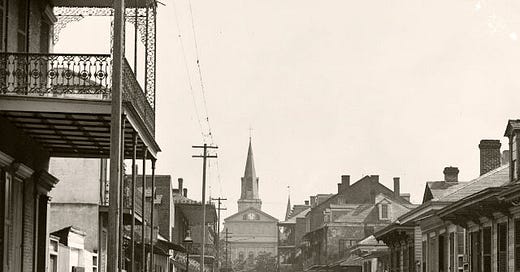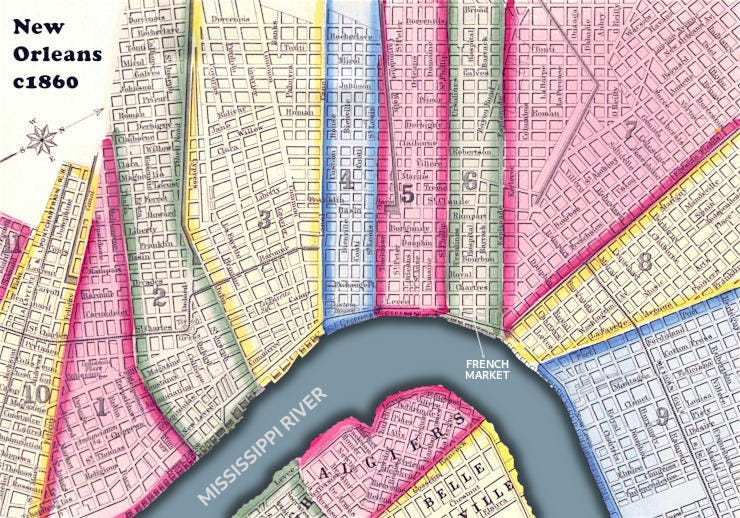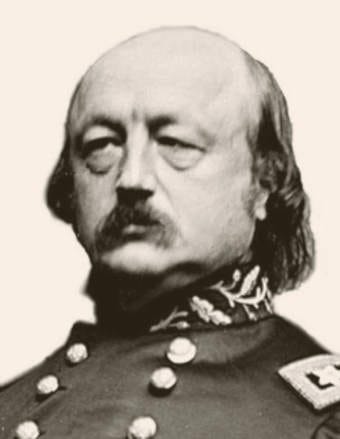Bloody ends of early NOLA bosses - Part 1
Crescent City underworld leaders lost their lives in long Mafia feud
Two brothers, who served as leaders of a faction of Palermo-born outlaws in New Orleans, lost their lives between 1869 and 1872. The Agnello brothers remain the best known but certainly not the only casualties of a Mafia war that raged in the Crescent City in that period.
The Agnellos1 became residents of New Orleans before the U.S. Civil War. Both were living in the city's Fifth Ward at the time of the Census of 1860. The specific address of the household was not noted, but that ward ran from the Levee northwestward toward Lake Pontchartrain between St. Louis and St. Philip streets. The Agnello home was likely in the extreme northeast of the ward, close to the Old French Market.2
Older brother Raffaele Agnello earned some notice early in the Civil War. He became a member of the Italian Guards Battalion of the European Brigade, a local militia of unnaturalized immigrants. When Union forces prepared to capture the City of New Orleans in late winter and early spring of 1862, Confederate forces including military troops and municipal law enforcement officers were pulled out of the area. The European Brigade remained behind to maintain order in the Crescent City. They performed that role through the period of negotiations with Union General Benjamin Franklin Butler and into the occupation of New Orleans.3
After the war, it appears that the Agnello brothers traveled to Europe and back. The names of Raphael Agnello, age thirty-six, and Joseph Agnello, age thirty-three, appear on the passenger manifest of the ship Jacob A. Stamler, which sailed from Le Havre, on the Channel coast of France, to New York City in the summer of 1866. (Manifests of that time provided limited details to verify that these were the Agnellos of New Orleans, but their basic information matched.)4
A Mafia-like organization made up of fellow Palermitani formed around Raffaele Agnello before 1868. (The specific term “Mafia” was seldom seen until the late in the next decade. Earlier press accounts instead attributed the organization, activities and code of conduct typical of Mafia to what was known as “La Vendetta.”) In 1868, Agnello's group came into conflict with a gang of immigrants from Messina. At some point, the vastly outnumbered Messinesi gained the support of another group of gangsters originally from Sicily's Trapani province. The New Orleans Crescent newspaper of April 2, 1869, looking back at recent events, seems to have been the first to report on these competing Sicilian factions.5
The press at the time linked Messina-born criminals with the production and regional distribution of counterfeit currency - primarily coins and the small-value “fractional” paper notes (known derisively as “shinplasters”) issued during the Civil War. The government managed to convict a number of Sicilian counterfeiters in the period, though their specific identification as Messinesi was generally done at a later date and has not been verified.6
Keep reading with a 7-day free trial
Subscribe to MobHistory to keep reading this post and get 7 days of free access to the full post archives.







